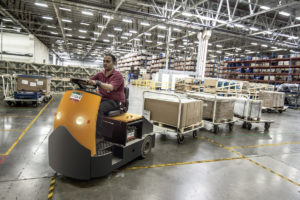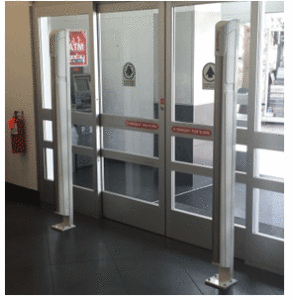 A unified leadership team for any business can be a catalyst for driving great results. When managers are all communicating with each other, sharing information and giving honest feedback an entire team benefits. Managers in those environments tend to see the big picture and can assist a peer in another department in their absence. As the staff members see this cohesion they understand that they can’t get one over on a supervisor or pit one against another. A management team that works well together can prevent situations where an employee may lie and not get caught or manipulate managers by playing what I call the “Mom vs. Dad” card.
A unified leadership team for any business can be a catalyst for driving great results. When managers are all communicating with each other, sharing information and giving honest feedback an entire team benefits. Managers in those environments tend to see the big picture and can assist a peer in another department in their absence. As the staff members see this cohesion they understand that they can’t get one over on a supervisor or pit one against another. A management team that works well together can prevent situations where an employee may lie and not get caught or manipulate managers by playing what I call the “Mom vs. Dad” card.
Working in a library, I see student workers trying to manipulate one or two “nice” staff members on a somewhat regular basis. The students may not see what they are doing as lying or being dishonest, they just know that there are certain supervisors who will probably say “Yes” to almost any request. The request may be to leave early or they want to call out of work for silly reasons. I had one employee who wanted to leave early because her pet fish was sick, even though she had spent one hour of her two-hour shift at work when she made the request. Now seriously, was she going to take this fish to a veterinarian? She chose the wrong supervisor to approach because the supervisor came to me and told me of the request and asked me for my opinion. While I gave the student the option to stay she was reminded that requests for leaving early impacted hiring decisions for the next semester. She stayed for her next hour.
In another situation, I had to have a conversation with a worker over her behavior with co-workers and supervisors. I made it clear the behavior would have to change and steps on how to improve. I did let her know I wanted her to be successful but I would not allow the behavior to continue if she was going to work for us. The employee came back later and attempted to give her resignation and turn in her equipment to one of our nicer staff members. The staff member was super sweet and was going to let it go with a, “I’m sorry to see you go.” The supervisor who was with me when I spoke with the employee walked in on the conversation and the mood changed. The employee tried to lie about the conversation and what was said to her. This supervisor cut off her excuses and reminded her what was really said during our talk. The employee left in a huff but the blame game was shut down. When the first supervisor was asked why she was just going to let the employee make her complaints and leave the supervisor said she liked to give people the benefit of the doubt. It’s no wonder why employees like to go to her to get what they want.
While we have a great team of supervisors, I do have problems with some who do not like to be the “bad guy”. A management team needs to share the burden of holding employees accountable for their actions. It is unfair to expect one or two supervisors to conduct discussions involving poor performance or behavior problems and/or administer corrective actions. These supervisors are the ones who appear to be the mean ones to the team members and acquire an undeserved reputation as being “unfair” or “harsh”. The best management teams are those in which everyone participates in the corrective action process. They document talks with employees and record them in some form of record keeping so when review time comes around those notes play a part in the scoring. These teams also have supervisors taking partners with each other making it harder for one person to be pitted against another.
There will always be those employees who try to get away with something whether it is not working as hard as their co-workers to outright lying to a supervisor. Those management teams that communicate amongst themselves and share the responsibility for administering correction or discipline when necessary will find it easier to identify and keep the best workers. Build a great store team by creating a cohesive management team that communicates with each other and shares the responsibilities of leadership.
 As managers and supervisors, we are all guilty at some point of assuming our employees will know what we are wanting from them when we make a request or assign a project. It may be something as simple as asking someone to empty a trash canister or as complicated as resetting a plan-o-gram. In our minds, the requested task may only require common sense but to the employee, it may be something totally different. Take the trash can example, you may ask an employee to empty it and assumed they would empty it into a compactor and place a new trash can liner inside. The employee may only hear that you want them to take the bag out and place the trash beside the compactor. They don’t hear you tell them to put a new liner inside the canister when they are done because you never said it. It seems like it should only be common sense but it isn’t necessarily the case. The same problem exists for every aspect of a job. Sometimes those of us in management positions make unfair assumptions and then get angry when our team members don’t do what we expected them to do.
As managers and supervisors, we are all guilty at some point of assuming our employees will know what we are wanting from them when we make a request or assign a project. It may be something as simple as asking someone to empty a trash canister or as complicated as resetting a plan-o-gram. In our minds, the requested task may only require common sense but to the employee, it may be something totally different. Take the trash can example, you may ask an employee to empty it and assumed they would empty it into a compactor and place a new trash can liner inside. The employee may only hear that you want them to take the bag out and place the trash beside the compactor. They don’t hear you tell them to put a new liner inside the canister when they are done because you never said it. It seems like it should only be common sense but it isn’t necessarily the case. The same problem exists for every aspect of a job. Sometimes those of us in management positions make unfair assumptions and then get angry when our team members don’t do what we expected them to do. A Target or Walmart store can and are able to fight shoplifting in their stores every day of the year.
A Target or Walmart store can and are able to fight shoplifting in their stores every day of the year. Some of the most stolen items in stores in the United States are not surprising. From Infant formula to razors, people are stealing these items to sell them for quick cash or because they are shoplifters that are dedicated to doing this crime. Valentine’s Day is approaching, and some of the items that seem to be gifted during this day are among the most commonly stolen items in the United States. A shoplifter will steal any time of the year, whether the opportunity presents itself or not, or whether it’s a holiday or a weekday. As a store manager or employee of a store, greeting and treating a customer politely can gain you a customer, and deter a shoplifter from stealing from your store. Customer service has been proven time and again to be a great deterrent to shoplifters, and cannot hurt to be polite and competent with your regular customers.
Some of the most stolen items in stores in the United States are not surprising. From Infant formula to razors, people are stealing these items to sell them for quick cash or because they are shoplifters that are dedicated to doing this crime. Valentine’s Day is approaching, and some of the items that seem to be gifted during this day are among the most commonly stolen items in the United States. A shoplifter will steal any time of the year, whether the opportunity presents itself or not, or whether it’s a holiday or a weekday. As a store manager or employee of a store, greeting and treating a customer politely can gain you a customer, and deter a shoplifter from stealing from your store. Customer service has been proven time and again to be a great deterrent to shoplifters, and cannot hurt to be polite and competent with your regular customers. I actually like and believe in all three of these things. When it comes to drugs they have to be the legal kind. All of us have seen the destruction that illegally used drugs cause. In a business environment, illegal drug use by an employee not only has an impact on their work performance but creates serious customer and legal issues for employers. An employee that is under the influence of any substance that influences their ability to do their job correctly or safely, will cause customers to question who they are doing business with.
I actually like and believe in all three of these things. When it comes to drugs they have to be the legal kind. All of us have seen the destruction that illegally used drugs cause. In a business environment, illegal drug use by an employee not only has an impact on their work performance but creates serious customer and legal issues for employers. An employee that is under the influence of any substance that influences their ability to do their job correctly or safely, will cause customers to question who they are doing business with.
 After the holidays, you probably have a whole array of chores you must do to decide whether you had a good or bad year. The holidays are behind us, and if you seem eager to have new strategies to put in place, it is not uncommon, and you are not alone. New year resolutions are abundant during this time of year, and even though many of them are related to exercise, eating and health issues, yours can be directed completely to the business side of your life.
After the holidays, you probably have a whole array of chores you must do to decide whether you had a good or bad year. The holidays are behind us, and if you seem eager to have new strategies to put in place, it is not uncommon, and you are not alone. New year resolutions are abundant during this time of year, and even though many of them are related to exercise, eating and health issues, yours can be directed completely to the business side of your life. With darker daylight hours comes the need for more coffee, the use of lights earlier and a plan to keep crime away from your store or business. Have you considered that one of the following types of crime could affect you?
With darker daylight hours comes the need for more coffee, the use of lights earlier and a plan to keep crime away from your store or business. Have you considered that one of the following types of crime could affect you?
 Accidents can be costly to businesses. In fact, according to the
Accidents can be costly to businesses. In fact, according to the It’s that time of year when all store owners and managers start to make personnel decisions. Remember those people you hired in late August, maybe in September or even as late as October or November? Remember the conversations you may have had with them discussing how this was a “seasonal” position? You may have really dangled the carrot in front of them and told them that if they worked hard and showed initiative they might be retained on your staff after the holidays. Guess what? It’s time now for you to start taking a hard look at your staff and making some decisions and that isn’t always pleasant. Now you have to evaluate those employees and consider whether you want to keep them or you may have to decide if you can afford to keep them.
It’s that time of year when all store owners and managers start to make personnel decisions. Remember those people you hired in late August, maybe in September or even as late as October or November? Remember the conversations you may have had with them discussing how this was a “seasonal” position? You may have really dangled the carrot in front of them and told them that if they worked hard and showed initiative they might be retained on your staff after the holidays. Guess what? It’s time now for you to start taking a hard look at your staff and making some decisions and that isn’t always pleasant. Now you have to evaluate those employees and consider whether you want to keep them or you may have to decide if you can afford to keep them.